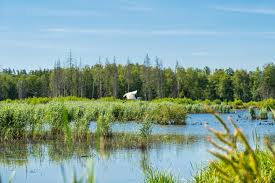biological diversity
biological diversity
Introduction
Biodiversity, a contraction of “biological diversity,” encompasses the variety and variability of life on Earth. From microscopic bacteria in the soil to massive whales in the oceans, biodiversity refers to every living organism, the genetic differences within species, and the ecosystems they form. It is the foundation of ecosystem services that sustain human life—providing food, water, oxygen, medicine, climate regulation, and more. Yet, despite its immense value, biodiversity is facing an unprecedented crisis due to human activities.
The Levels of Biodiversity
Biodiversity operates on three main levels:
-
Genetic Diversity: The variation of genes within a species. Greater genetic diversity increases a species’ chances of survival in the face of diseases, climate change, and environmental stressors.
-
Species Diversity: The variety of species within a particular region or ecosystem. Earth is home to approximately 8.7 million species, though millions remain undiscovered.
-
Ecosystem Diversity: The variety of ecosystems in a geographic area. Forests, wetlands, grasslands, coral reefs, and deserts all provide unique environmental conditions and support different forms of life.
Importance of Biodiversity
Ecological Stability
Ecosystems with high biodiversity tend to be more stable and resilient. When species interact in balanced ways—through predation, pollination, decomposition, and nutrient cycling—the system can better withstand shocks and changes.
Economic Value
Biodiversity fuels sectors such as agriculture, fisheries, pharmaceuticals, and tourism. For instance, wild species provide genetic material that is critical for breeding disease-resistant crops. Natural ecosystems also act as “natural capital” by providing clean water, fertile soil, and pollination—services worth trillions of dollars annually.
Cultural and Ethical Significance
Many indigenous cultures see biodiversity as sacred and integral to their identity. Moreover, there is a growing ethical argument that all species have a right to exist, irrespective of their utility to humans.
Threats to Biodiversity
The primary driver of biodiversity loss is human activity. Key threats include:
-
Habitat Destruction: Deforestation, urban expansion, and agriculture have fragmented or eliminated many habitats.
-
Pollution: Chemical runoff, plastic waste, and air pollution disrupt ecosystems and poison species.
-
Climate Change: Global warming alters weather patterns, forcing species to migrate, adapt, or face extinction.
-
Overexploitation: Overfishing, poaching, and logging reduce population sizes, often beyond the point of recovery.
-
Invasive Species: Non-native species can outcompete, prey on, or bring diseases to native species, leading to ecological imbalance.
Biodiversity Hotspots
Certain regions are recognized

as biodiversity hotspots—areas exceptionally rich in endemic species but facing severe threats. These include the Amazon rainforest, the Congo Basin, Madagascar, the Himalayas, and Southeast Asia. Protecting these areas is crucial for global biodiversity conservation.
Conservation Efforts
There are numerous local, national, and global initiatives aimed at protecting biodiversity:
-
Protected Areas: National parks, marine reserves, and wildlife sanctuaries provide safe havens for species.
-
Sustainable Practices: Eco-friendly agriculture, fishing, and forestry aim to balance human needs with ecological health.
-
Restoration Projects: Reforestation, wetland restoration, and rewilding efforts help revive degraded ecosystems.
-
International Agreements: Treaties such as the Convention on Biological Diversity (CBD) and CITES coordinate global conservation
-
efforts.
-
Community Engagement: Involving local and indigenous communities often leads to more effective and culturally sensitive conservation.
The Role of Individuals
While large-scale actions are crucial, individuals also play a vita
l role in protecting biodiversity:
-
Support sustainable and ethical products.
-
Reduce waste, recycle, and limit use of plastics.
-
Educate others about biodiversity and its importance.
-
Volunteer with conservation groups.
-
Advocate for policies that prioritize environmental health.
Conclusion
Biodiversity is not just about saving rare species; it’s abou

t preserving the living systems that make Earth habitable. The loss of biodiversity is both a moral and practical crisis, threatening food security, health, and the stability of our climate. But with awareness, innovation, and co
llective action, we can halt and even reverse the trend. The future of life on Earth—including our own—depends on it.


